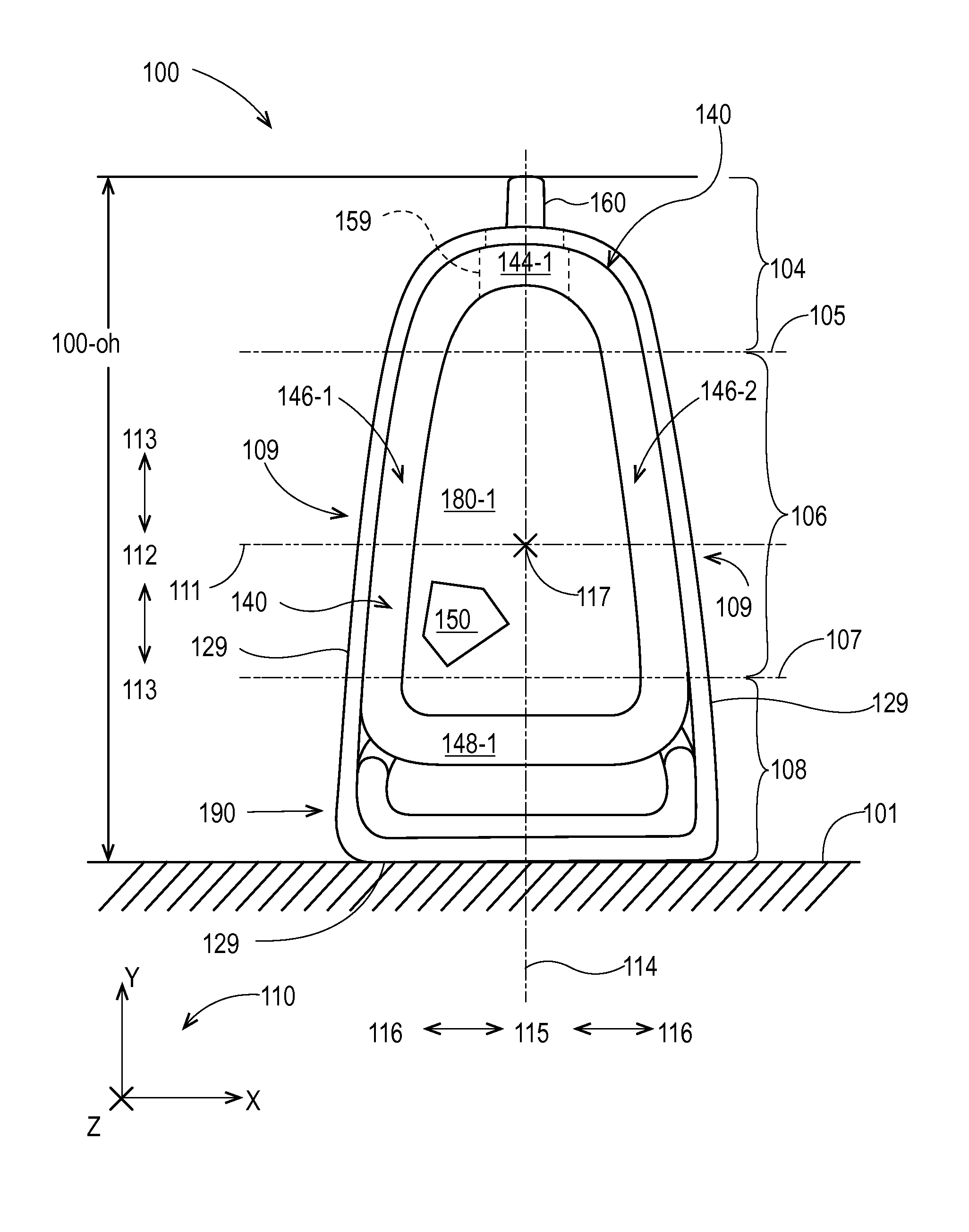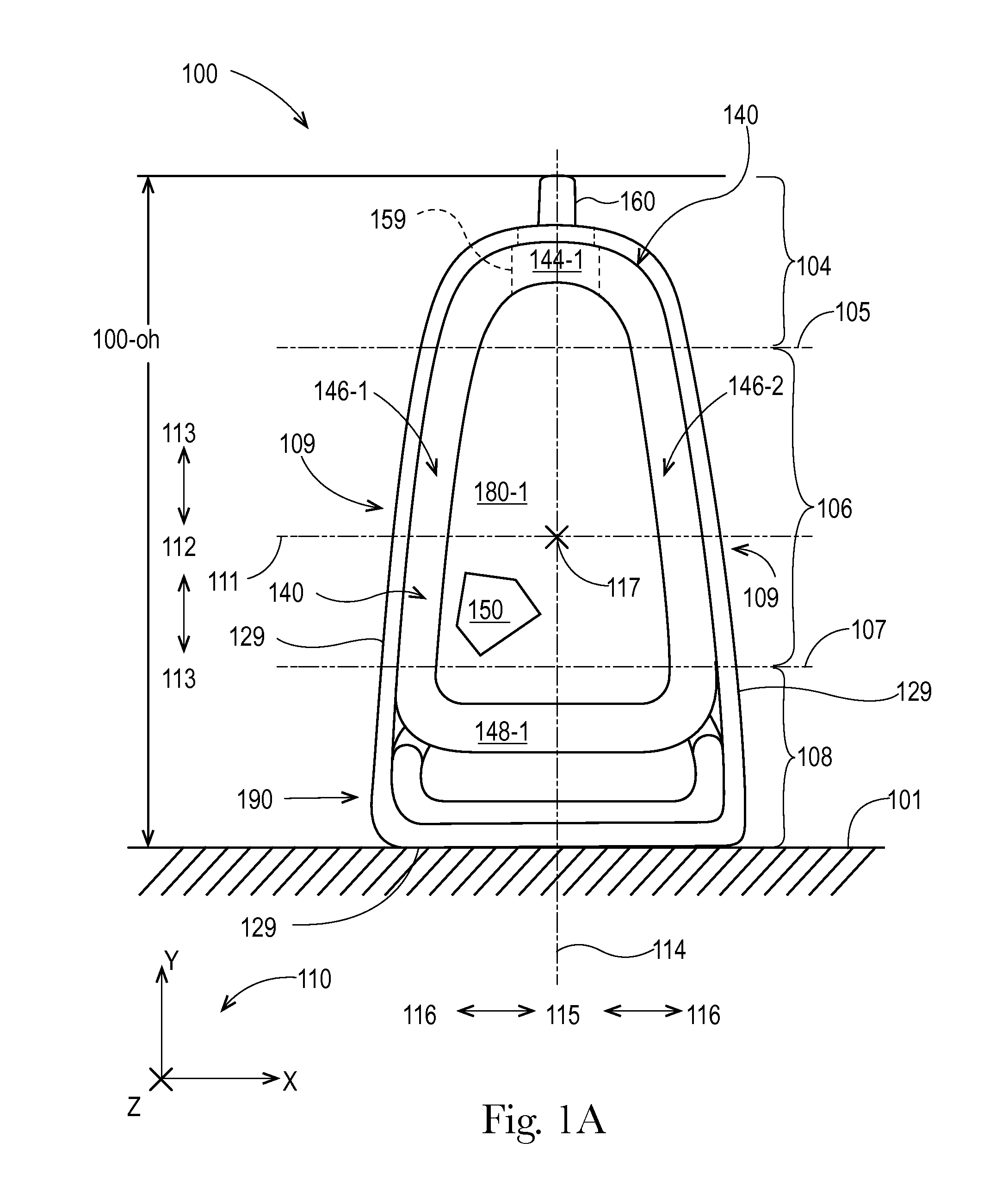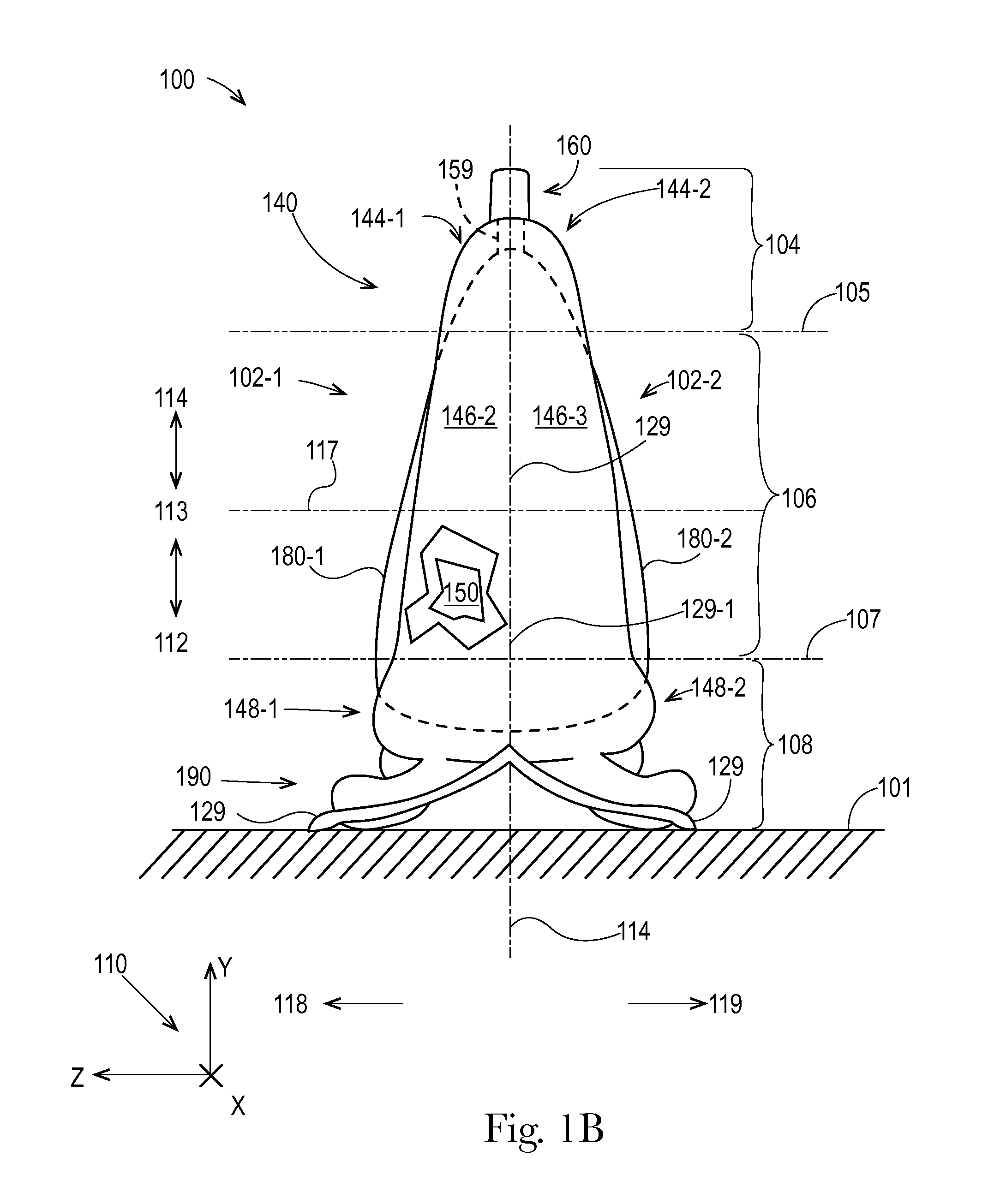Flexible materials for flexible containers
a flexible container and flexible technology, applied in the field of containers, can solve the problems of high production cost, high production cost of conventional rigid containers for fluent products, and high production cost of conventional rigid containers, so as to achieve less material consumption, less cost of production, and easy decoration
- Summary
- Abstract
- Description
- Claims
- Application Information
AI Technical Summary
Benefits of technology
Problems solved by technology
Method used
Image
Examples
example 1
[0234]A first laminate having layers ordered as shown below was formed. The total film thickness was about 90 microns. The PE layers were a blend of 90% LLDPE(ZN) with 10% LDPE as determined by temperature rising elution fractionation (TREF).
[0235]
Composition andOrder of the LayersThickness of the Layer (micron)FunctionPE18Sealable layerTie layerTie layerNylon~3Reinforcing layerEVOH6Gas barrierNylon~3Reinforcing layerEVA22Tie layerNylon~3Reinforcing layerEVOH6Gas barrierNylon~3Reinforcing layerTie layerTie layerPE18Sealable layer
[0236]The first laminate had the following properties:
[0237]
Creep: 5 MPa; 23 C.0.4% change @ 4 hoursTensile PropertiesModulus: 870 MPa% strain at yield: 2.5%Stress at yield: 20 MPaOTR MOCON0.0104 cc / 100 in2 · day
example 2
[0238]A first laminate having layers ordered as shown below was formed. The total film thickness was about 92 microns. The PE layers were 100% LLDPE(ZN) as determined by temperature rising elution fractionation (TREF).
[0239]
Composition andThicknessOrder of the Layersof the LayerFunctionPE42 μmSealant layerTie LayerTie layerNylon 618 μmGas barrier / Reinforcing layerTie LayerTie layerPE28 μmSealant layer
[0240]The first laminate had the following properties:
[0241]
Creep: 5 MPa; 23 C.1.9% change @ 4 hoursTensile PropertiesModulus: 480 MPa% Strain at yield: 3%Stress at yield: 13.5 MPa
example 3
[0242]A first laminate having layers ordered as shown below was formed. The total film thickness was about 80 microns. The PE layers were mostly LDPE with a small amount of LLDPE(ZN) as determined by temperature rising elution fractionation (TREF).
[0243]
Composition andOrder of the LayersThickness of the LayerFunctionPE32 μmSealable layerTie LayerTie layerEVOH12 μmGas BarrierTie LayerTie LayerPE32 μmSealable Layer
[0244]The first laminate had the following properties:
[0245]
Creep Resistance: 5 MPa; 23 C.0.7% change @ 4 hoursTensile PropertiesModulus: 708 MPa% strain at yield: 2.5%Stress at yield: 15 MPa
PUM
| Property | Measurement | Unit |
|---|---|---|
| melting temperature | aaaaa | aaaaa |
| melting temperature | aaaaa | aaaaa |
| thermal conductivity | aaaaa | aaaaa |
Abstract
Description
Claims
Application Information
 Login to View More
Login to View More - R&D
- Intellectual Property
- Life Sciences
- Materials
- Tech Scout
- Unparalleled Data Quality
- Higher Quality Content
- 60% Fewer Hallucinations
Browse by: Latest US Patents, China's latest patents, Technical Efficacy Thesaurus, Application Domain, Technology Topic, Popular Technical Reports.
© 2025 PatSnap. All rights reserved.Legal|Privacy policy|Modern Slavery Act Transparency Statement|Sitemap|About US| Contact US: help@patsnap.com



